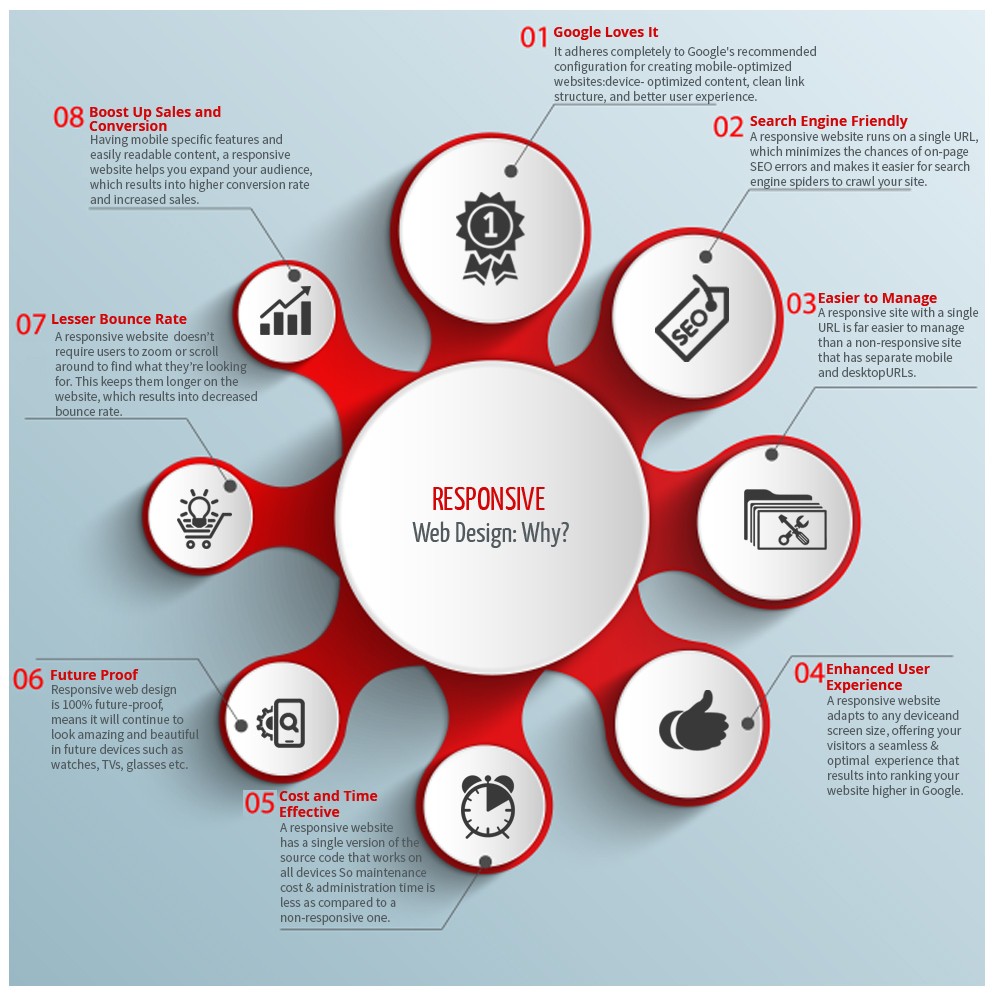Web Site Style Fundamentals: Tips For Structure A User-Friendly Website
Web Site Style Fundamentals: Tips For Structure A User-Friendly Website
Blog Article
Authored By-McKnight Ehlers
When it concerns web site layout, guaranteeing user-friendliness is vital. From receptive layout to structured navigating, every element plays a critical duty in creating a site that caters to your audience's needs. Yet what regarding the better information that can make or damage a user's surfing experience? Keep tuned as we discover some often-overlooked pointers that can elevate your internet site's functionality to the following level, making it really stick out in the electronic landscape.
Significance of Responsive Style
Responsive style is a vital facet of modern web site development. Ensuring https://online-marketing-best-pra84061.bloggerbags.com/39466270/the-environment-friendly-hosting-movement-environmentally-friendly-web-solutions is responsive methods that it can adapt to various display sizes and gadgets, offering a seamless experience for customers.
With the increasing use mobile phones and tablet computers to access the web, having a responsive style is crucial for getting to a bigger target market. It aids in boosting user experience by making your website simple to navigate and read on any type of gadget.
Additionally, responsive layout can positively influence your internet search engine positions, as online search engine like Google prioritize mobile-friendly web sites. By having Read More In this article , you're also future-proofing your internet site, as new tools with varying screen sizes remain to emerge.
Simplify Navigating Framework
To boost customer experience and facilitate simple access to info on your web site, simplifying the navigation framework is paramount. When creating your website, focus on producing a clear and intuitive navigating food selection that helps site visitors find what they're seeking promptly.
Limitation the number of food selection things to the essentials, organizing relevant pages with each other to avoid frustrating users. Use detailed labels that plainly show the material of each page, making it less complicated for customers to comprehend where each link will take them.
Consider implementing dropdown food selections for subcategories to prevent littering the primary navigating bar. Additionally, consist of a search bar prominently on the page for individuals that choose searching for particular details.
Prioritize mobile responsiveness in your navigation design to make certain simple accessibility on all tools.
Maximize Web Page Lots Speed
Improving page lots speed is essential for preserving site visitors on your site. Slow-loading web pages irritate individuals and can result in high bounce prices. To optimize page tons speed, beginning by maximizing pictures. Press images without compromising high quality to reduce their file sizes.
Furthermore, allow browser caching to store often accessed resources locally, accelerating tons times for returning visitors. Minify CSS, JavaScript, and HTML documents by removing unnecessary personalities, comments, and format, improving load rate.
Consider making read page of a content shipment network (CDN) to distribute your website's material across multiple web servers worldwide, decreasing latency for individuals accessing your website from different areas. Finally, restrict the use of third-party manuscripts and plugins, as they can significantly affect load times.
Conclusion
Finally, by integrating responsive style, streamlining navigation, and enhancing page tons rate, you can create a straightforward internet site that attract a larger target market and boosts individual experience. These essential elements make certain that visitors can easily accessibility and navigate your site throughout various devices, leading to increased involvement and fulfillment. By focusing on these essential aspects, you can construct a successful internet site that keeps customers returning for more.
